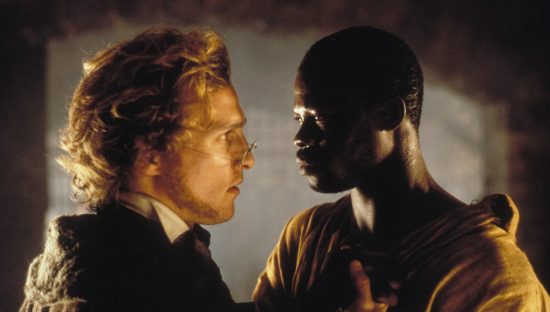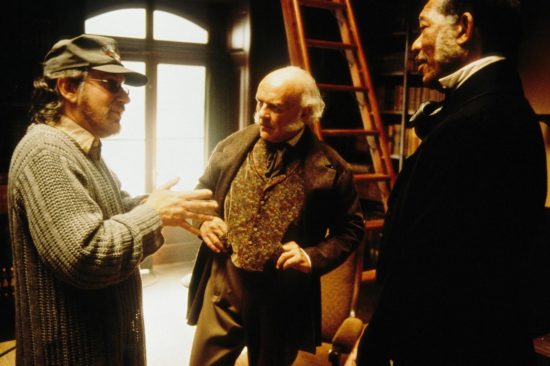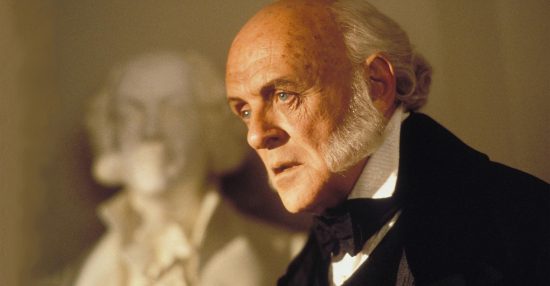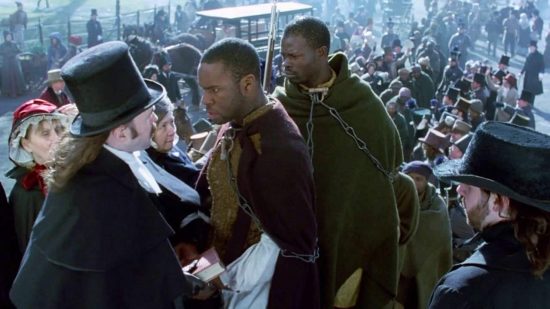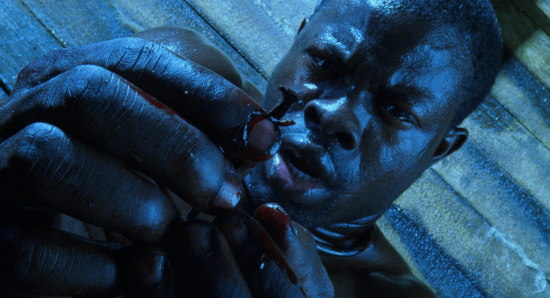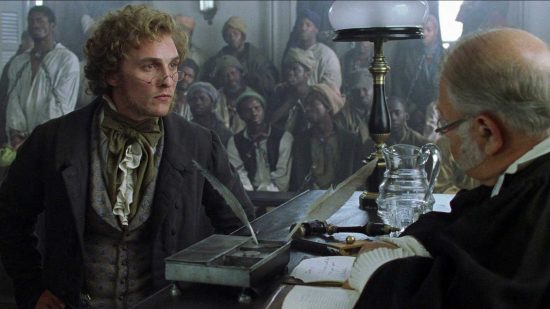SpielBLOG: Amistad – A Steven Spielberg Retrospective
1997 saw Steven Spielberg rerunning 1993. Following his longest hiatus after Jurassic Park and Oscar-winning Schindler’s List, it was pleasingly symmetrical that he should return with Lost World paired with Amistad, one of the very few American films to deal with the slave trade.
That fact – that almost uniqueness – should not be dismissed. Spielberg, for all his popularity and multiplex draw, has a bravery in seeking out material that doesn’t conform to Hollywood fare. I’ve always felt Spielberg’s heart is in the right place and as Hollywood’s most powerful director, his willingness to go into the darkness should be applauded even when the actual films don’t necessarily succeed.
If anything Amistad is perhaps too respectful to its subject, but let’s first say what is good about this film. First of all, the opening. The slave rebellion is brilliantly portrayed. Almost like a horror film, the lightning flashes, the rains pours, the pain is of fingernails and wood, and the violence is bloody and real. Our sympathies are not asked for. The slaves win their freedom in a brutal fight of survival which will be retrospectively justified in the other great moment of the film: the depiction of the middle passage.
The film is based on a true story when in 1839 aboard the slave ship La Amistad was taken over by the Mende tribesmen who had been abducted and enslaved. An international legal battle followed when the men were re-captured by the Washington, a U.S. revenue cutter. The case was ultimately resolved by the U.S. Supreme Court in 1841 and highlighted the tensions between the abolitionists and the slave-owners which would ultimately lead to the Civil War.
With the capture of the Mende, the film curdles into a legal drama, something that will occur in two future Spielberg films – Lincoln and The Post, but that’s for another (ahem) post. Name actors Morgan Freeman and Matthew McConaughey step in to help newcomer Djimon Hounsou carry the film with veteran thesp Anthony Hopkins lurking in the background to steal a final scene.
Spielberg is good with period. He has the feel for the place and the people. And yet he can’t help but turn the light golden and have it shaft in at prayer card diagonals when he wants to underline a moment. The feelgood beats always feel awkward and the slaves themselves occupy the John Merrick seat, surrounded by well-meaning liberals but unable to rise above the role of chorus in their own tragedy.
The best expression of genuine anger comes from the most unlikeliest of places. Peter Firth plays a British captain who gives evidence in the case. In any other film, he would have been a slave-hating villain, but here without changing his cold contemptuous performance, he’s actually giving evidence in support of the freedom of the slaves and against the inhumanity of the Middle Passage and the trade in general. It’s one of those surprising choices that Spielberg does so well.
But the problems with the film have to be admitted. The first is the aural soup that John Williams ladles incessantly in our ears. The music might be good, I don’t know. But there’s just so much of it and frankly, it is in the key of ‘moving and portentous’, which isn’t great. The next thing is the thesping. Everyone is emoting in a way that has little to do with character and much more to do with where they are on the serious acting ladder. The build-up to Hopkins and his fussy sniffing performance might be forgivable if it wasn’t for the way the other characters are summarily dismissed as the Welsh Olivier approaches. Spielberg has access to the most talented actors of the generation and his eye is unerring. Pete Postlethwaite, Peter Firth, Stellan Skarsgard and Nigel Hawthorne all do creditable work, and McConaughey anticipates his own McConaussiance, but few of the characters get the air that they need. This is an epic crushed into a courtroom and then blanketed with Williams’ mush.
That said, the Middle Passage scene shows how well Spielberg can tell this story, even in its most gruesome and horrific details. As with the opening scenes, this is Spielberg at his most visual, his most cinematic. It feels more like reality and less like a history lesson with illustrations. There’s something visceral here, literally putting the blood and guts back into what otherwise can end up feeling a bit like a dusty recreation. Perhaps this is the lesson Spielberg would take into another film. One which once more has an explicitly didactic purpose and yet manages to keep the living people more vividly to life, with blood and guts galore.

